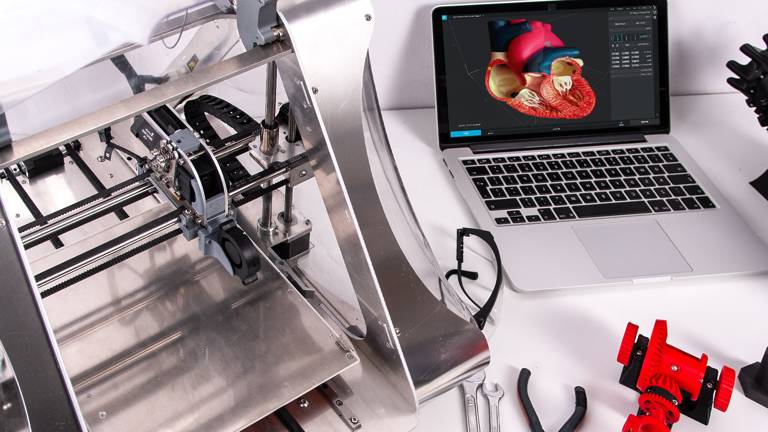
The dream of having spare parts for human organs, and especially for the heart, seems even more to be within reach.
Andrew Lee - a researcher in Carnegie Mellon University, Pittsburgh and his colleagues have perfected the latest 3D printing methods and used collagen, the most essential component of the extracellular matrix (the supporting structure of biological tissues), as a raw material.
The result crowns some years of research and experimentation efforts by Lee's group, which already in 2015 presented the first version of this system, called FRESH. However, one of the key obstacles of printing biological tissues, or bioprinting, had not yet been overcome, namely, the production of a material that is flexible while it is implemented with a very well-defined microstructure, that is suitable to maintain cell colonization and a network of blood vessels.
Collagen, in particular, is the most fitting material to form the supporting structure for synthetic organs, but it is challenging to control its microstructure at various dimensional scales while printing.
Lee and colleagues solved the problem by depositing collagen as the "ink" in a 3D printer, layer by layer, inside a gel, controlling the solidification of collagen even at the most miniature scales, up to 10 microns. They thus obtained a matrix with a porous microstructure, with canals up to 30 microns in diameter, suitable for cell infiltration and matrix vasculature.
These last two processes have been successful, both with mouse cells and with human cells in culture, thanks to the addition of two ingredients: fibronectin, another key protein of the natural extracellular matrix, and VEGF, a strong growth factor of blood vessels.
Using cardiomyocytes, the cells that create the heart muscles, derived from human stem cells, the authors then succeeded in constructing more and more sophisticated models - a cardiac tissue, a ventricle and finally a complete newborn heart - with incredible accuracy, captured by the MRI.
The FRESH method, in its second version called FRESH 2.0, has therefore established its effectiveness for printing the human heart but it also can be used to produce supporting tissues for a wide range of organs. To achieve this goal, researchers must still overcome several technical obstacles, including the 3D printing of large tissues, with billions of cells.









